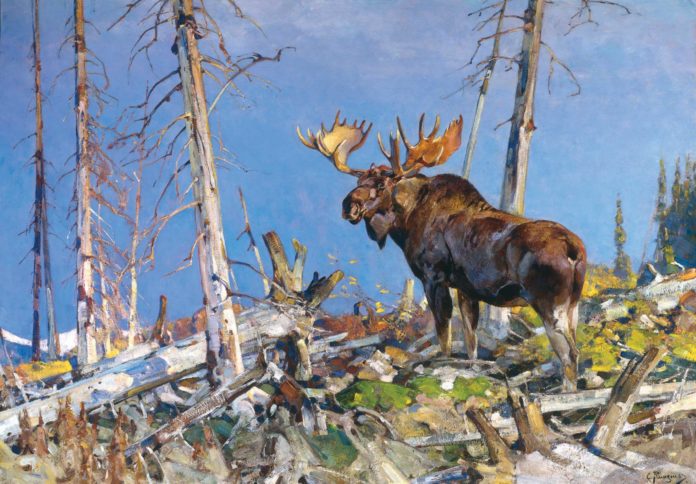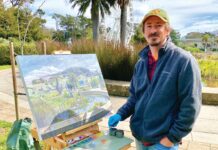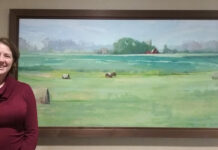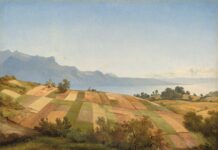
Master Study: Plein Air Artist Carl Rungius (1869–1959)
Primarily known as a painter of big game, Carl Rungius earned himself a revered position in the canon of plein air painting for his fidelity to working directly from life. He once said, “If you paint outdoor scenes in the studio, your color gets too hot. Only if you paint outdoors do you see the cool, silvery tones that are the true colors of nature.”
Rungius developed his skills for depicting animals with anatomical accuracy at the zoo in Berlin, his birthplace. In 1894, he traveled to Cora, Wyoming, to hunt and sketch, and never went home. For the next decade, he spent his summers in Wyoming, painting and hunting moose, pronghorn, and bighorn sheep in the Rocky Mountains, then retreated to his studio in New York, where he dedicated the long, cold winters to painting large-scale oils from his plein air studies.
In 1905, he embarked on a career-defining expedition to the Yukon Territory. Describing the hordes of mosquitoes that plagued his party, he said, “When I got through with an oil sketch, the palette looked like a mince pie with the crust off! And I had to clean the sketch itself with a forceps to remove the carcasses.”
Visit EricRhoads.com to find out all the amazing opportunities for artists through Streamline Publishing, including:
– Online art conferences such as Plein Air Live
– New video workshops for the studio or plein air artist
– Incredible art retreats
– Educational and fun art conventions, and much more.
> Subscribe to Plein Air Today, a free newsletter for artists
> Subscribe to PleinAir Magazine so you never miss an issue





Thanks for the note on Carl Rungius. He sounds like an American painter but that is not quite accurate. Carl spent winters in his NY studio but a large part of his adult life in Banff, Canada. He visited first in 1910. In a few years he bought land in Banff and built a studio he called the Paintbox. He spent every summer from April to October in Banff until his death in 1959. After his death his ashes were spread near Banff and the entire contents of both Banff and NY studios including all art work was purchased by the Glenbow Museum in Calgary, Canada.
I have always loved his art. I grew up in Banff. When I was younger I always enjoyed visiting the Whyte Museum to see his paintings. Very inspirational.